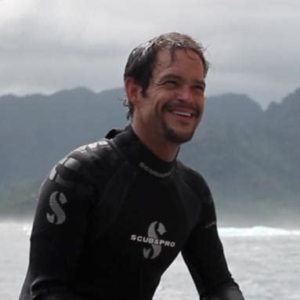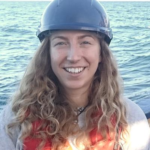The Omic Biodiversity Observation Network (Omic BON) aims to promote coordinated biomolecular observations for global insight and action.
Omic BON is a thematic BON focused on the study of genes, transcripts, proteins, metabolites, and other biomolecules in organisms or environmental materials. Omics enables biodiversity observation at the molecular scale across environments and geographies. Omic BON will complement thematic BONs focused on environments (Marine BON, Freshwater BON, Soil BON), as well as national and regional BONs. Omic BON will additionally closely work with the GEO BON Genetic Composition Working Group.
Omic BON will coordinate its growing partnership to establish a distributed, global biomolecular observatory. Its first round of priorities will be promoting intercalibration of biomolecular observing technologies, the development of globally harmonized practices, standards, and protocols. It provides a forum for international stakeholders to align approaches using existing and new biomolecular technologies. Omic BON also promotes alignment of omic cyberinfrastructures and raises awareness of the societal implications of omics observation (e.g., in the ethical, legal, and policy domains).
Omic BON will be coordinating effort along five major axes: (1) localized omic observatories, (2) networks of observing platforms, (3) data infrastructures, (4) curated and long-term stores of biosamples, and (5) (meta)data standardization bodies.
About Omic BON
Co-Leads
 Raïssa Meyer Alfred Wegener Institute, Helmholtz Centre for Polar and Marine Research, Germany |
 Pier Luigi Buttigieg GEOMAR, Helmholtz Centre for Ocean Research \\ Helmholtz Metadata Collaboration, Germany |
 Neil Davies University of California at Berkeley, French Polynesia |
Exploratory / Steering Committee
The Exploratory / Steering Committee consists of co-Leads and members mentioned below:
 Kathleen Pitz Monterey Bay Aquarium Research Institute, USA |
 Christopher Meyer National Museum of Natural History, Smithsonian Institution, USA |
 Robyn Samuel University of Southampton/National Oceanography Centre, UK |
| Interested to join? Click the Register button. |
History
Omic BON originated from the union of the Global Omics Observatory Network (GLOMICON) and the Genomic Observatories Network (GO Network). It was first envisioned as a BON under GEO BON at the GSC21 meeting in Vienna in 2019 and formally endorsed by GEO BON in 2022.
Key objectives
Ambition: A globally integrated, omic meta-observatory(1) that monitors biodiversity at the molecular level(2).
- Build reliable, standardized baselines of biomolecular biodiversity
- Facilitate the intercalibration of contributing partners as omic technologies develop and are adopted, channeling innovations (new sequencing technologies, automated samplers, data science) into meta-observatory operations
- Support partners in overcoming regionalisation and siloing of biomolecular observations and data
- Facilitate the establishment and interoperability of omic time-series
- Facilitate export and sustained delivery of trusted biomolecular (meta)data and information products to global aggregators (INSDC, OBIS, GBIF, GOOS), compatible with specifications relevant to the EBVs, EOVs, and other biodiversity monitoring mechanisms at local, national and regional scales.
- Establish a regular (annual) global assessment of change in biomolecular diversity
- Establish mechanisms to detect sudden or consequential events and trigger collective, targeted actions to respond to emerging threats (e.g., health of humans, agriculture, aquaculture, and fisheries) or needs (e.g., in monitoring invasive species or illegal trade in protected species)
- Create and coordinate multiple thematic (e.g., metabolomics, metagenomics, automation, biobanking and terms of reuse) knowledge hubs to enable global biomolecular observation in the BON
(1) A meta-observatory is a distributed observatory to which anyone performing well-documented and metadata-rich observations – from citizen science initiatives to established long-term observatories – can contribute. The observations conducted independently across time and space are integrated into a coordinated body of observations.
(2) As such, Omic BON will address the finest scale of biodiversity, as noted in the Convention on Biological Diversity.
1. Building an Operational Omic BON
| Leads | Raïssa Meyer, Neil Davies, Pier Luigi Buttigieg, Katie Pitz, Chris Meyer, Robyn Samuel | |||
| Team/Partners | All hands | |||
| EBV Class | ||||
| Development approach | Take stock – align strategies – develop co-implementation paths – secure agreements – build diagnostics – test and validate – synthesize – evolve | |||
| Description | Task to build an operational network of observatories (meta-observatory) using omics to monitor trends in biodiversity from local to global scales. | |||
| Timeline | 2022 | 2023 | 2024 | 2025 |
| Milestones and/or Deliverables | Management
Establish Omic BON Start-up governance structure Establish Omic BON Exploratory Committee, Advisory Committee, and Secretariat Ratify/agree on key objectives Networking Build Omic BON, with special efforts to boost representation of terrestrial groups Establish links to other BONs and relevant WGs Secure a formal link with the UN Ocean Decade Programme OBON Convene a task team to develop a diversity, inclusivity, and equity strategy to ensure that the interests and operational realities in the BON’s scope are well represented Identify consortia to join EBVs and EOVs Coordination with the Genetic Composition WG, and other WGs with EBVs relevant to omics observing Coordination with the GOOS BioEco Panel Communications Introduction of Omic BON at GEO BON All Hands Meeting Publish Omic BON Founding charter |
Management
Formalize Omic BON (operational phase governance structure, membership) Networking Close coordination with Genetic Composition WG, and Omics-relevant BONs Recruit new members and partners based on gaps in knowledge and geographic representation and develop a mechanism whereby new initiatives self-select to join Omic BON Join consortia previously identified as highly relevant to Omic BON’s success Start an activity on Policy development and alignment This will be more outwardly oriented than 1, with the goal to bring many global projects, large and small, to the table to align their policies from the strategic to the implementation level. |
Management
Formalize links to partners through MoUs and/or other mechanisms as appropriate
Networking Continued coordination with Genetic Composition WG, and Omics-relevant BONs Continue to recruit/welcome new partners and members Set up a self-recruitment process for Omic BON members Demonstrations Demonstration the functional components of Omic BON’s meta-observatory, in conjunction with plans for their enhancement |
Consolidation of meta-observatory components
Secure sustainable components of a global omics observatory system / meta-observatory and define path to maintenance Continued alignment of / with new projects Focus effort on ensuring new, local/regional omics observation efforts contribute to the global and collective mission of Omic BON |
| Resources | At present, Omic BON is being built through support of individuals engaged in academic, government, and private sector projects. | |||
| Link with other activities | Through its cross-cutting nature as a thematic BON, Omic BON coordinates efforts involving omics-techniques across all other BONs | |||
2. Developing Omic BON’s data strategy
| Lead | Raïssa Meyer, Pier Luigi Buttigieg | |||
| Team/Partners | ODIS, GSC, TDWG, OBIS, GBIF, INSDC, BeBOP, ENVO, SDGIO, GOOS (EOVs) | |||
| EBV Class | All | |||
| Development approach | Capacity sharing, data collection | |||
| Description | This activity focuses on improving the availability, re-usability, and interoperability of global omics biodiversity data. | |||
| Timeline | 2022 | 2023 | 2024 | 2025 |
| Milestones and/or Deliverables | Strategic documents
Coordinate with OBON to align strategies and develop a zero-draft of the OBON-Omic BON joint digital strategies for the coming Decade Task Teams Identify priority tasks in data management and start to assemble task teams as needed (e.g., task team to explore the handling of sensitive omic data) (Meta)data standards Coordinate with the Biodiversity Information Standards (TDWG) and the Genomic Standards Consortium (GSC) to establish a Memorandum of Understanding between these two standards organisations highly relevant to omics biodiversity data Data infrastructure Support BiCIKL (linked to GBIF, OBIS, and the INSDC) in building a repository for omics biodiversity matrix data Management of methodological documents Contribute to the UN Ocean Decade Project BeBOP Semantic interoperability Contribute to relevant ontologies (e.g., ENVO, SDGIO) to capture knowledge about omics biodiversity observing |
Strategic documents
Open review of joint OBON-Omic BON digital strategy (Meta)data standards Continued coordination with the GSC and TDWG Establishment the Minimum Information about an Omics Protocol (MIOP) specification Data infrastructure Continued coordination with BiCIKL (linked to GBIF, OBIS, and the INSDC) to support the development of a repository for omics biodiversity matrix data Management of methodological documents Develop strategy to expand/link BeBOP to terrestrial protocol management frameworks Semantic interoperability Contribute to relevant ontologies to capture knowledge about omics biodiversity observing Developing a strategy for omics-enabled EBVs and EOVs Identify dataflows of omics-enabled EBVs and EOVs Develop a shared GEO BON strategy for omics resources Community position statements on using omics for Essential Variables (EBVs/EOVs/EEVs) |
Strategic documents
Publication of reviewed of/updated OBON-Omic BON digital strategy for the coming decade (Meta)data standards Continued coordination with the GSC and TDWG Maintenance of MIOP and establishment of the Minimum Information for any (x) Observatory (MIxO) specifications Management of methodological documents Provide guidance on FAIR protocol management linked to different partners Semantic Interoperability Contribute to relevant ontologies to capture knowledge about omics biodiversity observing |
Transition to maintenance mode
(Meta)data standards Continued coordination with the GSC and TDWG Maintenance of MIOP and MIxO Semantic interoperability Continue to contribute to relevant ontologies to capture knowledge about omics biodiversity observing Continued alignment of / with new projects |
| Resources | At present, Omic BON is being built through support of individuals engaged in academic, government, and private sector projects. | |||
| Link with other activities | Through its cross-cutting nature as a thematic BON, Omic BON coordinates efforts involving omics-techniques across all other BONs. | |||
3. Tracking / indexing samples
| Lead | Neil Davies, Kathleen Pitz | |||
| Team/Partners | TBD | |||
| EBV Class | All | |||
| Development approach | Coordination, Data collection, Assessments and Policy Support | |||
| Description | Building the meta-collection pillar of the meta-observatory, includes best-practices for accessing, tracking, storing the biosamples that underpin omic observations and future analyses of those samples (sharing samples, ex situ access). Noting that the meta-observatory will include data from in situ sampling AND ex situ sampling (the latter being continued unpacking of data from samples using new omic tech as it becomes available – futuromics). | |||
| Timeline | 2022 | 2023 | 2024 | 2025 |
| Milestones and/or Deliverables | Identify groups focusing on how best to handle samples used in omics
Establish a link to the Sampling Nature Research Coordination Network |
Survey the previously identified initiatives and groups on (1) how they handle samples and (2) how intercontinental coordination (Omic BON) could support the improvement of sample exchange
Work with Omic BON members to identify opportunities and challenges in handling omics samples |
Issue recommendations on how the meta-observatory should handle omics samples | |
| Resources | At present, Omic BON is being built through support of individuals engaged in academic, government, and private sector projects. | |||
| Link with other activities | Through its cross-cutting nature as a thematic BON, Omic BON coordinates efforts involving omics-techniques across all other BONs. Omic BON will also closely coordinate with the Genetic Composition WG. | |||
In this early stage, we are not generating our own data products, but we are engaging with major omic data aggregators to develop and align existing (meta)data standards and conventions to support cross-platform interoperability and discovery. Early activities include:
- Stable data specifications for omic-related biodiversity data in GBIF and OBIS, in collaboration with OBON & GOOS for EBV/EOV interoperability.
- Digitisation of methodologies (from field to in silico) used to generate BON-ready data products.
Published
Meyer R, Davies N, Pitz KJ, Meyer C, Samuel R, et al. The founding charter of the Omic Biodiversity Observation Network (Omic BON), GigaScience, Volume 12, 2023, giad068, https://doi.org/10.1093/gigascience/giad068
The Omic BON proposal has previously been introduced at the GEO BON Open Science Conference & All Hands Meeting 2020 to seek input from the broader community prior to its finalization [https://conf2020.geobon.org/pdf/book-of-abstracts_geobon.pdf p.105].
Buttigieg PL, Fadeev E, Bienhold C, Hehemann L, Offre P, Boetius A. Marine microbes in 4D-using time series observation to assess the dynamics of the ocean microbiome and its links to ocean health. Curr Opin Microbiol. 2018 Jun;43:169-185 https://doi.org/10.1016/j.mib.2018.01.015
Davies N, Field D, Amaral-Zettler L, et al. The founding charter of the Genomic Observatories Network. Gigascience. 2014;3(1) https://doi.org/10.1186/2047-217x-3-2
Omic BON brings together key partners in observatories, data and sample infrastructures, standards and best-practices organizations, and Global Earth and Ocean observing programmes. Please see the Members page for up-to-date information about our partners and members.

